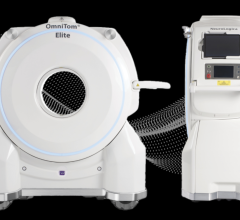The Society of Nuclear Medicine and Molecular Imaging (SNMMI) recently held its annual meeting in St. Louis. It provided an in-depth review of molecular imaging technologies, clinical applications, and translational and advanced research topics for molecular imaging professionals — nuclear medicine physicians, scientists, radiologists, cardiologists, pharmacists, technologists, researchers, and others involved and interested in nuclear medicine and molecular imaging and therapy.
On the show floor, several vendors introduced new PET/CT systems for the market.
Among them was Philips’ Vereos, which is the first on the market to offer digital PET detectors, and offers greater image clarity over traditional analog photomultipliers.
Toshiba announced the release of its Celesteion system. It currently is pending 510(k) clearance from the U.S. Food and Drug Administration (FDA), and combines high-performance PET and CT for all radiation and oncology imaging needs, including tumor detection, treatment evaluation and CT simulation.
In addition, GE Healthcare introduced its Discovery IQ PET/CT system. It enables both high image quality and intelligent quantitation. It is pending 510(k) clearance from the FDA and not available for sale in the United States.
You can learn more about the trends and technology showcased at SNMMI 2014 by viewing the videos “Editor’s Choice of Most Innovative Technology at SNMMI 2014” and “SNMMI: Trends and New Technology in Nuclear Imaging.”
Several interesting studies came out of the show, as well, and covered a vast spectrum of topics, including:
• Antibody-based molecular imaging agent hones in on newly targeted cell receptor that
hints at more aggressive breast cancers and potential therapy;
• Molecular neuroimaging shows a strong association between a sleep disorder and the development of progressive brain diseases such as Parkinson’s;
• Study finds the newest hybrid cardiac molecular imaging system highly effective for the detection of coronary arterial disease;
• Molecular imaging study suggests late-life depression and beta-amyloid plaque in the brain could tip-off hastened development of deadly dementia;
• Researchers can now use radioluminescence to examine the characteristics of single, unconnected cells, and the result is a fascinating picture of diversity among cells previously assumed to behave the same; and
• Wide range of molecular imaging modalities is at researchers’ fingertips with a hybrid device dedicated for early-stage clinical trials.
As always, you can read more about these innovative studies, as well as other industry news, at www.itnonline.com.


 July 30, 2024
July 30, 2024 








